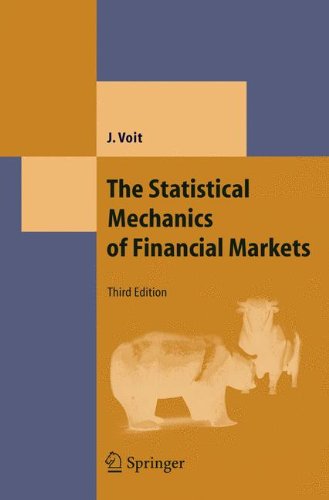Johannes Voit9783642065781, 3642065783
The random-walk technique, well known in physics, is also the basic model in finance, upon which are built, for example, the Black-Scholes theory of option pricing and hedging, plus methods of portfolio optimization. Here the underlying assumptions are assessed critically. Using empirical financial data and analogies to physical models such as fluid flows, turbulence, or superdiffusion, the book develops a more accurate description of financial markets based on random walks. With this approach, novel methods for derivative pricing and risk management can be formulated. Computer simulations of interacting-agent models provide insight into the mechanisms underlying unconventional price dynamics. It is shown that stock exchange crashes can be modelled in ways analogous to phase transitions and earthquakes, and sometimes have even been predicted successfully.
This third edition of “The Statistical Mechanics of Financial Markets” especially stands apart from other treatments because it offers new chapters containing a practitioner’s treatment of two important current topics in banking: the basic notions and tools of risk management and capital requirements for financial institutions, including an overview of the new Basel II capital framework which may well set the risk management standards in scores of countries for years to come.







Reviews
There are no reviews yet.